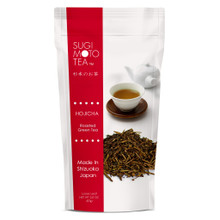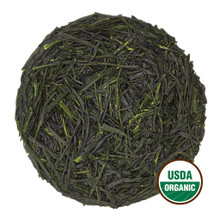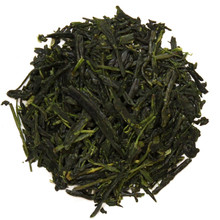Iced Tea vs Cold Brew: What's the Difference?
When summer arrives, cold tea becomes a staple for many. But not all chilled tea is created equal. You might hear "iced tea" and "cold brew" used interchangeably, yet they refer to distinct brewing methods that produce unique results.
This distinction is especially important when preparing Japanese green teas, which extract quickly even in cold water unlike many black or herbal teas. Knowing how each method works allows you to tailor your brew to the tea and the experience you want.
Definitions and Methods
Iced Tea (Hot Brew, Chilled) refers to tea that is brewed using hot water and then cooled down, either by letting it sit in the refrigerator or by pouring it over ice for a quick chill. This method is widely used and deeply rooted in tradition, especially for black teas and hojicha.
- Pros: Hot water extracts flavor, caffeine, and antioxidants more thoroughly, making it an efficient method.
- Flavor Profile: Because hot water extracts catechins and caffeine more efficiently, iced tea often has a brighter and more robust flavor., These compounds contribute to the characteristic bitterness and astringency of green tea, which are much less pronounced in cold brew.
- Tip: To counteract dilution when serving over ice, it’s best to brew your tea slightly stronger than usual.
Cold Brew (Mizudashi) involves steeping tea leaves in cold or room-temperature water for an extended period—usually 10–15 minutes for Japanese green teas. This slower extraction process highlights different flavor characteristics.
- Pros: Cold water draws out amino acids like theanine, which dissolves more readily at lower temperatures. This creates a clean, rounded flavor that highlights the tea’s natural sweetness.
- Flavor Profile: Cold brew tends to be smoother and softer, with delicate umami and little to no astringency. It's particularly suited to shaded teas like gyokuro or kabusecha.
- Caffeine Content: Cold-brewing typically extracts less caffeine, making it a good option for a gentler refreshment.
Ice Brew (Kōridashi) is a traditional Japanese method that uses ice in place of water. As the ice slowly melts over the tea leaves, flavor is extracted drop by drop. This ultra-slow, low-temperature brew is typically reserved for premium teas like gyokuro or high-grade sencha, which reveal their full complexity when treated delicately.
- Pros: Produces a concentrated, silky brew with rich umami and virtually no bitterness. Ideal for appreciating the depth of high-quality teas.
- Flavor Profile: Intensely smooth and umami-forward, with a thick mouthfeel and lingering sweetness.
- Caffeine Content: Very low, due to the slow extraction and cold temperature.
Each method has its strengths, and understanding them can help you tailor your brewing to the tea you're using and the experience you want to create.
Flavor Differences
Brewing technique significantly impacts the flavor profile of your tea. Iced tea, made with hot water, tends to have a more vibrant, assertive character. The hot water activates catechins and caffeine, often resulting in a brisk, aromatic brew. This method works especially well for teas like sencha and hojicha, where a stronger presence is desirable.
Cold brew, on the other hand, extracts flavors more gently. This method brings out the tea’s gentle sweetness and softens any bitterness, resulting in a tea that’s noticeably softer on the palate. The enhanced presence of amino acids like theanine adds a layer of savory depth, especially in umami-rich shaded teas.
The contrast goes beyond strength, revealing different dimensions of flavor and aroma. A cold-brewed sencha might taste sweeter and softer, while the same tea served as iced tea might be bolder and more tannic. The same tea can express entirely different qualities depending on how it’s brewed.
When to Choose Which
Choosing between iced tea and cold brew often comes down to timing, taste preferences, and occasion.
Choose Iced Tea if:
- You’re short on time and need tea quickly.
- You enjoy a bold, aromatic cup with a brisk edge.
- You’re brewing roasted teas like hojicha, which hold up well to hot water and chilling.
Choose Cold Brew if:
- You’re planning ahead and want a smoother, more refreshing experience.
- You’re sensitive to caffeine or prefer a milder drink.
- You’re using shaded teas like gyokuro or kabusecha, which reveal their nuanced umami better with cold extraction.
- You want a convenient option for tea pitchers or bottles—perfect for warm afternoons, picnics, or outdoor gatherings.
Both methods are useful tools for showcasing different sides of Japanese tea. Let your schedule, the tea itself, and the moment guide your choice.
Tools & Techniques
The right tools can enhance both your brewing experience and the quality of the final cup. Each method benefits from equipment designed to bring out the best in your tea.
For Iced Tea, a traditional kyusu (Japanese teapot) works best for hot brewing. Simply steep your tea as usual, then chill it in the refrigerator or pour it over ice. Brewing slightly stronger than usual helps maintain flavor after dilution. For flash-chilling, brewing directly over ice in a heat-safe container can be a great time-saver.
Brewing Guidelines:
- Use hot water (around 160–175°F / 70–80°C for sencha)
- Brew slightly stronger than usual (about 1.5x your normal leaf-to-water ratio)
- Chill by placing it in the refrigerator or pouring over ice.
For Cold Brew, a cold brew bottle, like the HARIO Filter-in Bottle, is ideal. Its built-in filter allows you to steep loose-leaf tea directly in the bottle, making preparation and pouring simple and mess-free. Most Japanese green teas are ready in just 10–15 minutes when cold brewed, so it’s a quick and convenient way to enjoy tea throughout the day.
Brewing Guidelines:
- Add approximately 5g of tea leaves to 500ml of cold or room-temperature water.
- Steep for 10–15 minutes in the refrigerator.
- For stronger flavor, increase the steeping time slightly or adjust leaf quantity to taste.
HARIO Cold Brew Portable Bottle
Pairings and Occasions
Each brewing method complements different settings and flavors, making it easy to match your tea to the moment.
Iced Tea is bold and bright, making it a refreshing companion to hearty meals and lively gatherings. It pairs especially well with grilled foods, summer picnics, and barbecues. Iced hojicha, for example, offers a smoky note that balances savory dishes beautifully.
Cold Brew is gentle and smooth, ideal for quiet afternoons or moments of relaxation. Its naturally sweet and umami-rich profile shines when paired with lighter fare—think fresh fruit, delicate sweets, or even sushi. Cold-brewed gyokuro with chilled melon or wagashi offers a refined experience perfect for a solo tea break or a warm-weather treat.
Whether you're sharing iced tea at a weekend barbecue or savoring cold brew with a quiet dessert, both have their place in a summer tea routine.
Making the Most of Your Summer Tea
Iced tea and cold brew each bring out a different side of Japanese green tea.
Exploring both is a simple way to understand how temperature and technique shape aroma, taste, and texture. Try preparing the same tea using each method and observe how its character evolves.
Whatever your preference, both offer distinct and rewarding ways to enjoy Japanese green tea in summer.





